How To Visit New York’s Nuclear Lake (Yes, This Exists)
A few weeks ago, I was using Google Maps to search for lakes north of the city. Most seemed to have your typical lake names, like Green Mountain Lake, or Harmony Lake, but one in particular caught my eye…
Does New York really have a Nuclear Lake??
Of course, the first image to pop into my head was the Nuclear Lake from The Simpsons, complete with three-eyed fish jumping about and a pipe openly dumping radioactive waste.
As it turns out, this actually isn’t all that far from the truth. In 1958, an experimental nuclear fuel research lab was set up on the shores of a lake in Pawling, NY, by Nuclear Development Associates. According to this 1955 NY Times article, the remote site was chosen because “it was the largest convenient and available tract that was not crossed by public roads and could be adequately guarded for secret experiments,” which would involve “uranium and other radioactive materials.” How reassuring!
All was apparently fissioning along just fine until the early 1970s, when two serious accidents occurred at the site. First, in 1971, a rubber stopper came off of a plutonium powder container, contaminating a lab room with radioactive material. Then, in 1972, a chemical explosion occurred in the building adjacent to the lake (pictured below in this NY Times article), causing an unknown amount of plutonium powder to spew out into the air and presumably onto the surrounding grounds. Nuclear Lake had earned its name.
Little seems to be known about the accident, though local legend has it that at least one person died, and that there was a cover-up. In the comments left to this Nuclear Lake post, one local recalls his mother, a nurse, saying that one of the victims came into the hospital with his watch melted down to his bone; another rumor has it that the ambulance he was transported in is buried on the site (you can read about a horrifying accident at a similar facility here).
A clean-up commenced at a cost of $3,000,000, and the land was deemed safe for “unrestricted use.” The company closed down the plant shortly after, and the land was sold to the National Park Service for inclusion into the Appalachian Trail. Though documents were found that suggested the company may have also been dumping radioactive waste water into the lake, a Nuclear Regulatory Commission study gave it a clean bill of health in 1994.
Of course, I had to visit Nuclear Lake for myself.
Last weekend, I drove up to Pawling with a few friends and my fluffy-butted dog Lulu. We parked at the trailhead and headed into the woods.
It didn’t take long before we began spotting the ubiquitous white blazes signifying the Appalachian Trail, painted every few trees (sadly, we didn’t see any thruhikers – perhaps it’s too early in the season?).
We continued deeper into the forest for about 20 minutes, seeing numerous squirrels, chipmunks, and woodpeckers, though surprisingly, not a single mutated turtle of either the teenage or ninja varieties.
Finally, we arrived at the Nuclear Lake loop trail, which circles around the lake to rejoin the AT on the other side.
Starting the trail, we soon came across the first remnant from the former lab: the original access road leading to the site, which appears to still be maintained. Crazy to think this was once a guarded road for a nuclear lab conducting secret research for the government.
Shortly after, we spotted a chain-link fence through the trees surrounding the former lab site.
Finally, we began to see water. We made our way through an opening in the trees…
…and arrived at the shores of the disgusting, grimy, pollution-filled Nuclear Lake.
Kidding, of course! Nuclear Lake is absolutely gorgeous, with nary a Swamp Thing or Gil-man to be found. In fact, many thruhikers on the Appalachian Trail describe it as one of the most beautiful sights on the entire trek.
But what about the former lab site? From our vantage point, we could see the area at the south side of the lake, surrounded on both sides by chain-link fences (all buildings have since been razed).
To the left, we could also see a floating barrier in the water. Any idea what the purpose of this is?
Hoping to take a look at the former lab site up close, we continued hiking around the lake, eventually rejoining the Appalachian Trail and heading back south.
Finally, we arrived at the insurmountable chain-link fence, clearly in place to prevent anyone from accidentally entering the contaminated grounds and inadvertently turning into either an Amazing Colossal Man or a 50-foot Woman, depending on your gender.
Kidding again. Actually, the fence is quite easy to get around, and seems only in place to prevent people from driving onto the former lab site.
Here is where the lab would have been…
…and if you can forget the possibility of getting a little plutonium dust in your sandwich, it really makes for a fantastic picnic location.
Here’s the picture of the abandoned lab again to give you a sense of where it was once situated:
Today, there’s no trace of the former buildings save for what appears to be a foundation off to one side (possibly remnants of the former waste disposal building?).
Stepping further back, it soon became clear that the entire area we were standing on was an artificial hill, made all the more obvious when you went down the slope on the far side:
We found a hatch set into the top, and while I’d like to believe it leads to a Dharma Initiative-like room (what were the numbers again??)…
…a better guess would be that it’s an access point for the dam opening at the base of the hill:
All in all, we had a beautiful two-hour hike, there were no unwanted mutations amongst the group, and about the only suspicious thing we came across were these oversized dandelions just outside the lab site (I suppose there are worse things in the world than mutant dandelions).
If you’re looking for a fun and relatively easy hike, Nuclear Lake definitely makes a great option. Despite Google Maps’ estimate, it only took us about an hour and twenty minutes to drive up to Pawling. We did the Nuclear Loop side first, but I’d actually recommend starting with the Appalachian Trail portion, which gives you the best views of the lake and plenty of picnic spots early on. You can find more info on the hike (including where to park) here.
-SCOUT
PS – On the way back, I highly recommend a stop at Heinchon’s Ice Cream Parlor about 10 minutes away on Route 22 South.
Founded in 1923, the place is as old-fashioned as it gets. In fact, I think the sitting area literally qualifies as an actual parlor.
Head all the way to the back of the house for your ice cream – the mud pie was amazing.

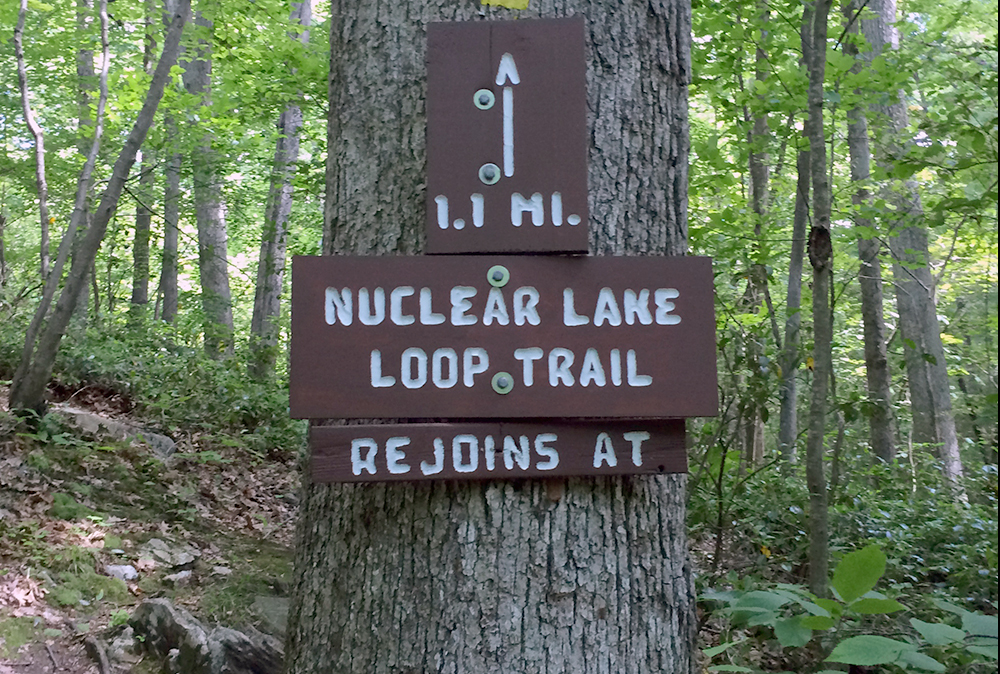


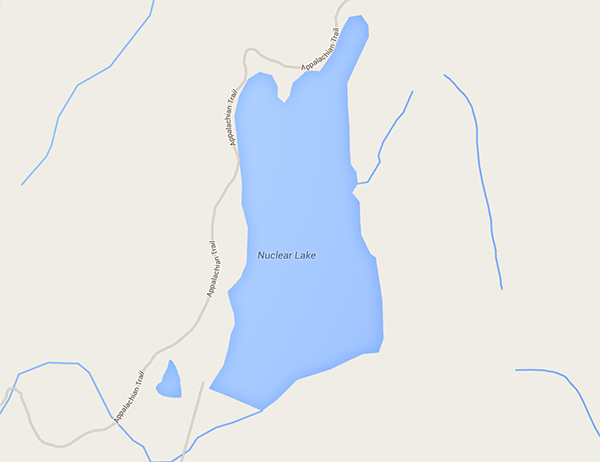
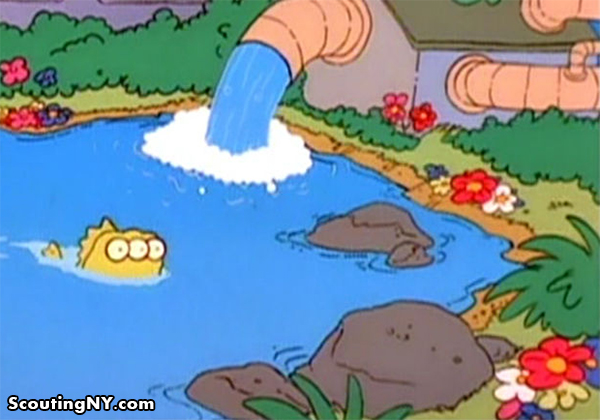
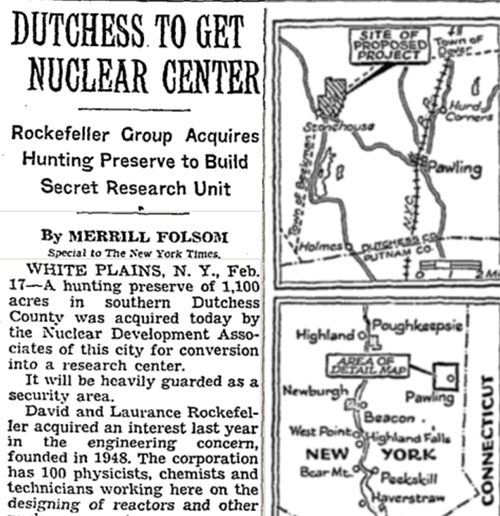
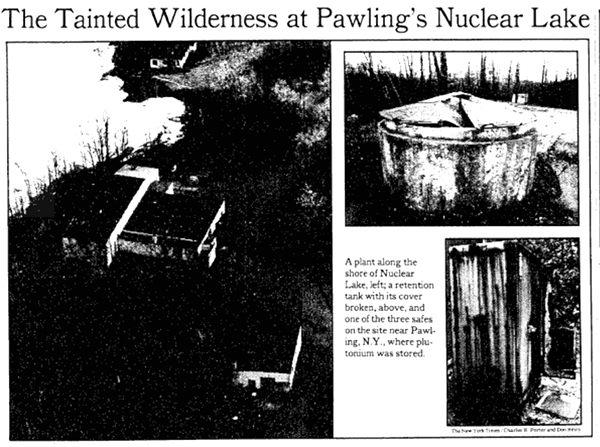
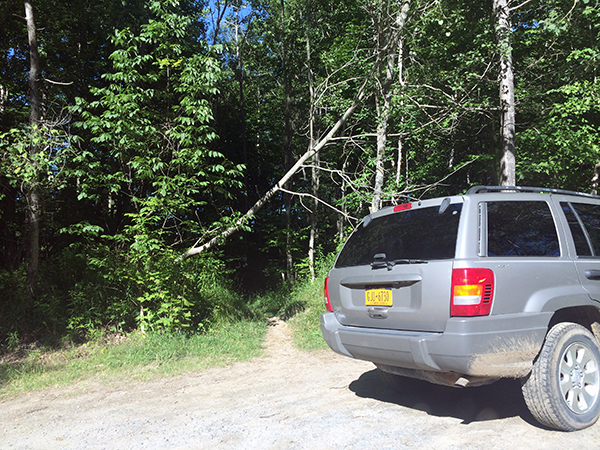
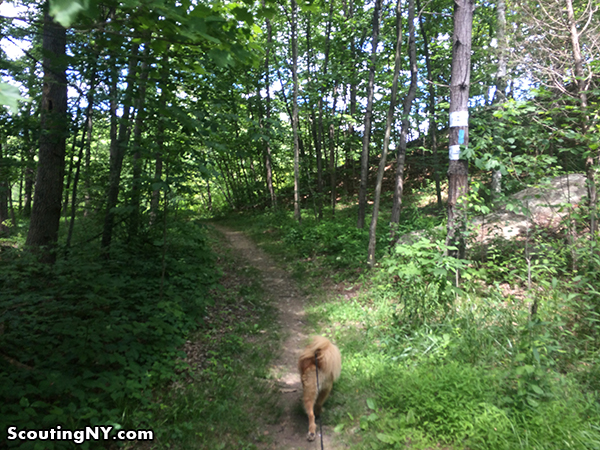
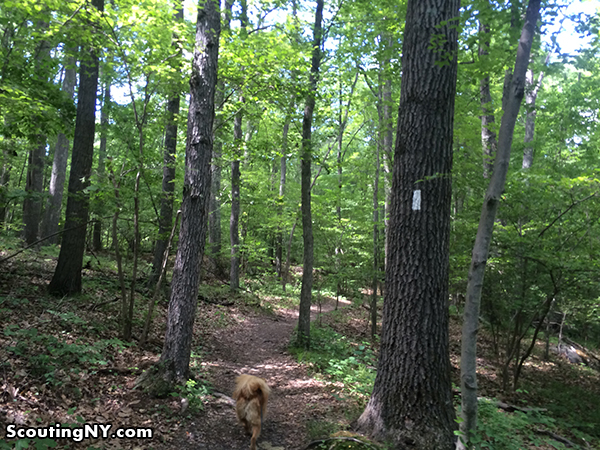
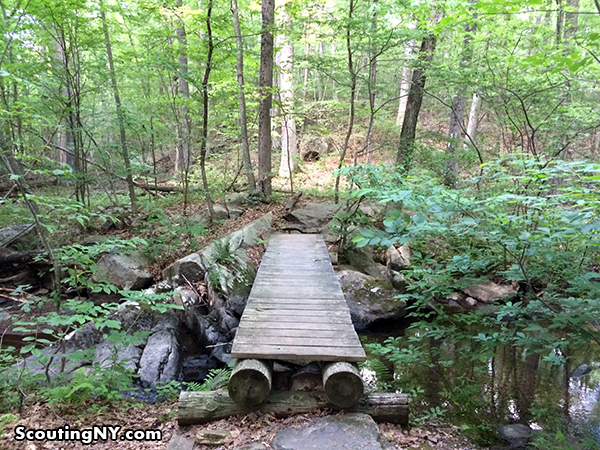
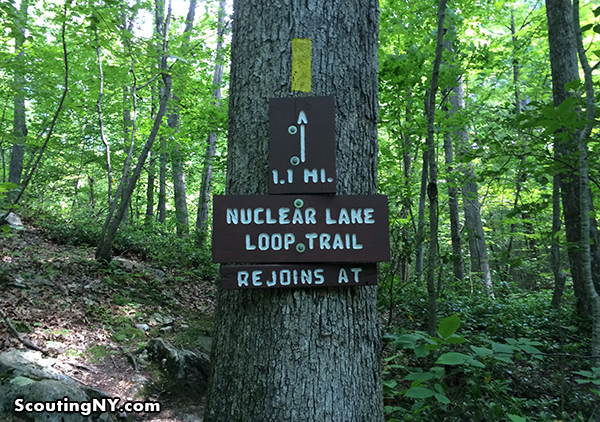



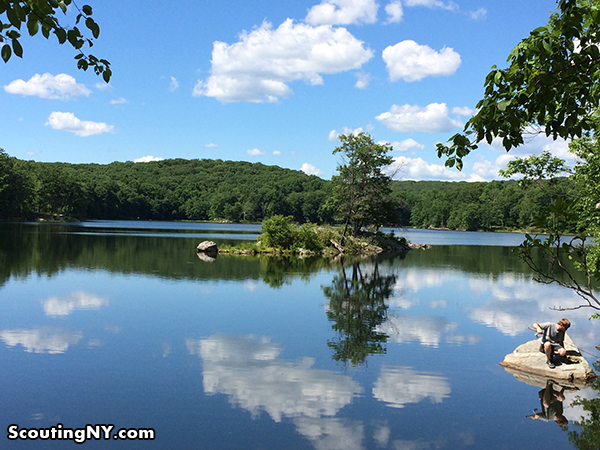


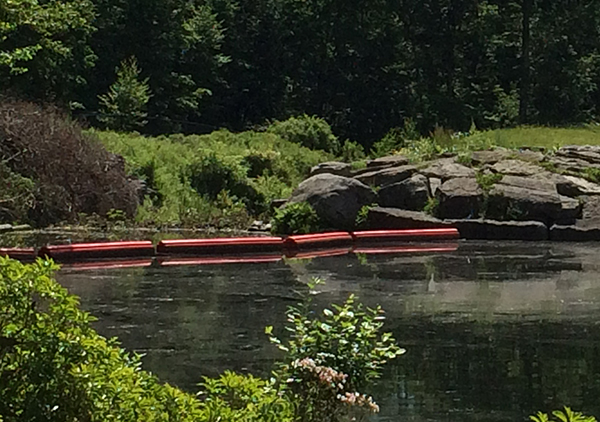
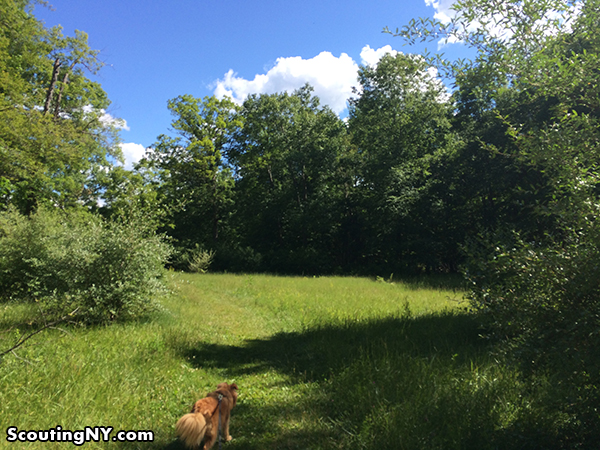


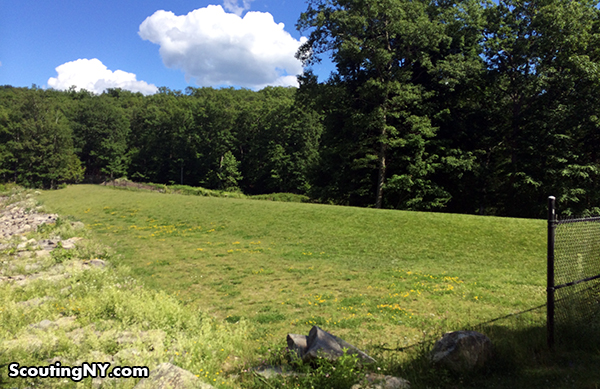
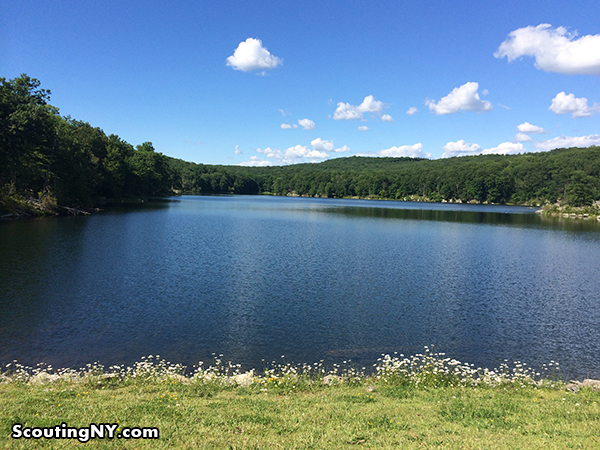
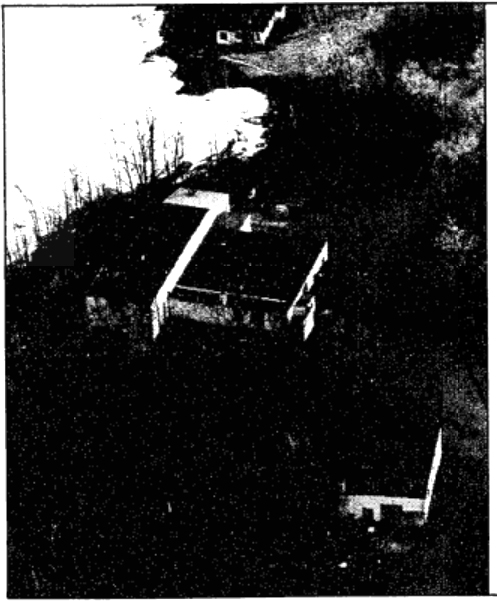
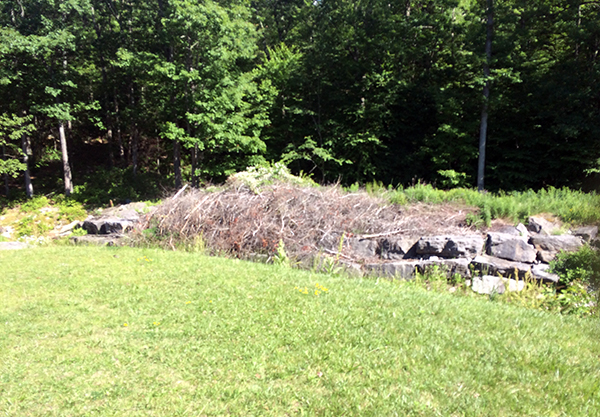

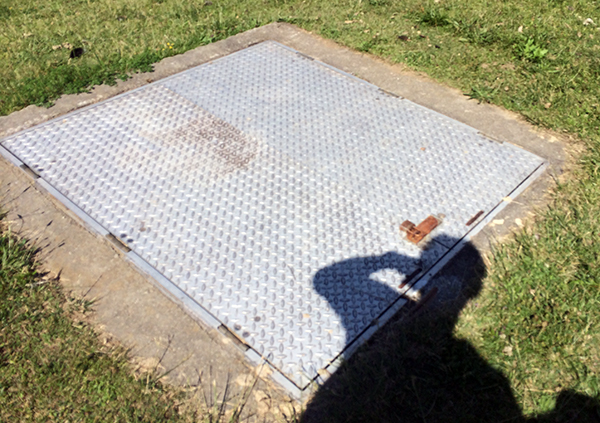


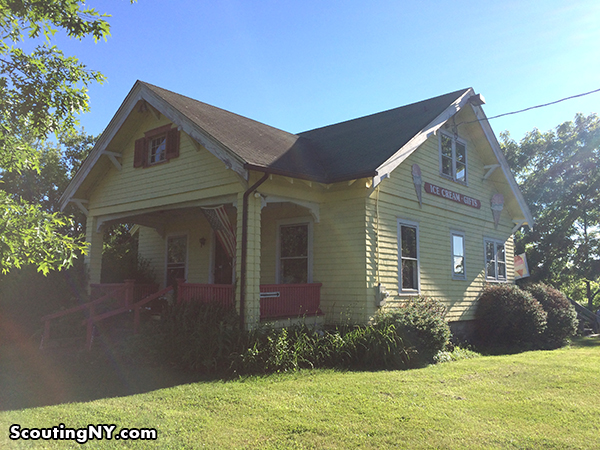
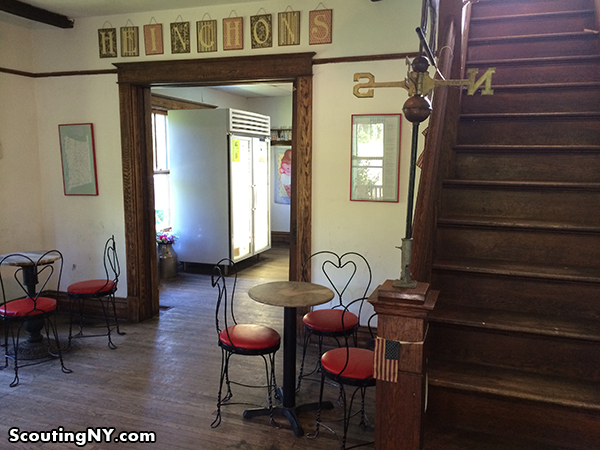
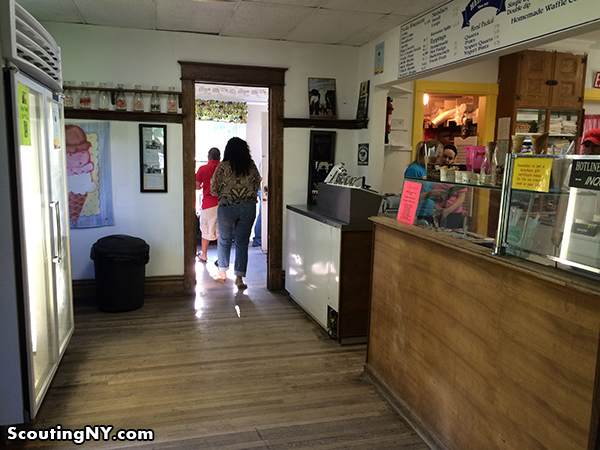
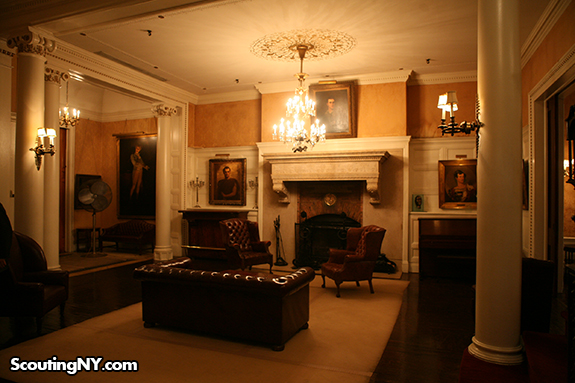

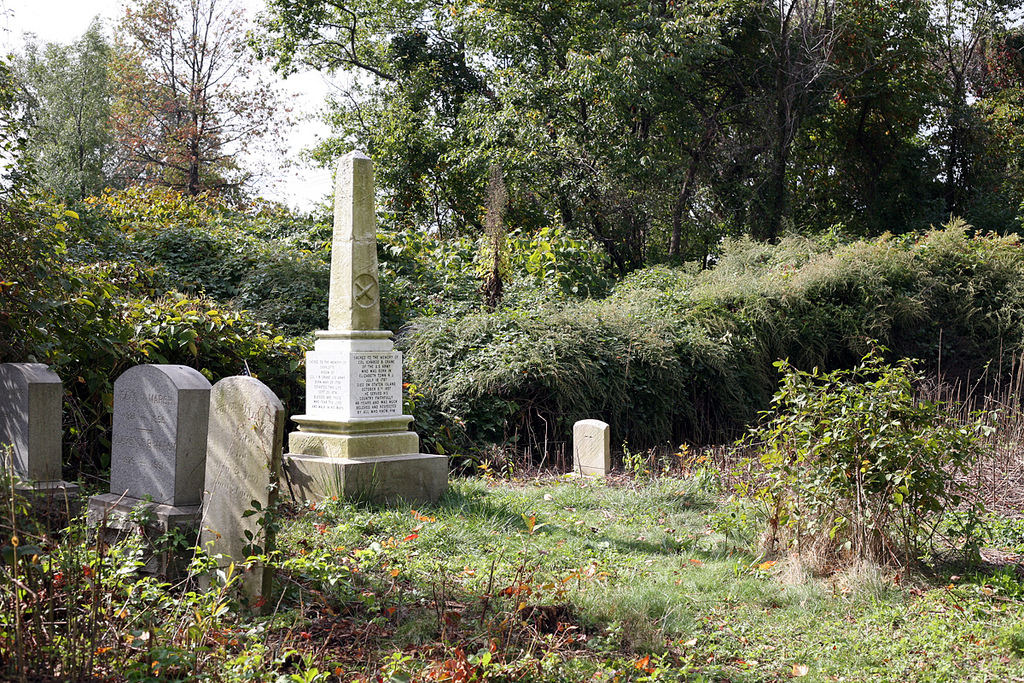



It is fun to take the train from Grand Central to the Appalachian Trail, too http://en.wikipedia.org/wiki/Appalachian_Trail_(Metro-North_station)
In early 1961 three servicemen died in a steam explosion at a military research reactor in Idaho. Although they died from blast injuries, their bodies received enormous amounts of radiation and remained lethally radioactive. They had to be buried in lead-lined coffins inside extremely thick concrete vaults, with mourners kept more than 50 feet away during the funeral services, and each cemetery’s records contain cautionary notices against disturbing the gravesites.
Strange fact: even though embalming was impossible, the bodies showed no signs of decay when finally ready for burial weeks after death. The huge radiation doses preserved them.
My grandpa worked as a chemist at this site in Idaho and had some awesome experience. However, he, his wife, and 4 of their 9 children have had cancer, so it makes one wonder how risky it was.
Back in the 1950’s and 1960’s the maximum safe exposure limits for nuclear workers were much higher than they are today. Only as more over-time case studies became available did regulators realize that the old limits were too high.
Of course, the vast majority of people who develop cancer have never worked with radiation, so it can be difficult to prove links between exposure and cancer. It’s all a matter of statistical inferences.
I wish you’d taken a geiger counter with you! I’m not inclined to go there–lovely as it is–until I get some readings.
>To the left, we could also see a floating barrier in the water. Any idea what the purpose of this is?
The floating boom is to prevent the spread of surface pollution; they are very common. Often you will find these near outfalls to the next body of water to prevent washing surface pollution (read: oil and petrochemical friends) from washing downstream OR you will find it near an inflow to a body of water, a street storm drain perhaps, to prevent the spread of oil to the larger body of water that may wash down from streets. It likely has nothing to do with the former use of the site.
Not dandelions – probably Goatsbeard
4 – 8 – 15 – 16 – 23 – 42….
Re: the hill. Aerial shot from Google is pretty telling when compared with the photo of the site when it was active. I am willing to bet that the hill contains lead, concrete, and other methods of keeping contamination to a minimum or nonexistent allowing you to get so close to a former nuclear site. It’s similar to other methods of burying contamination, similar to what was done at Love Canal near Buffalo.
David Rockefeller. What an evil man…..and family.
What was the lake’s former name?
Nick,
Thanks for writing about Nuclear Lake.
There’s an easier, shorter way to get in for those with mobility issues and that’s to turn onto Route Old 55 where it meets Route 55. Right there is a parking area. Follow the road back past the caretaker’s house, through the chain and then back to the lake. A good sports wheelchair will make it fine. People haul their kayaks and canoes on makeshift trailers using that route, once the main entrance to the lake.
There’s a lot history and mystery about the site going back to its early days as a gentleman’s retreat.
A few years back they had to make repairs to the dam so they had to drain the lake(!) and what emerged were long-submerged fields and stone walls that showed the valley as it looked before the lake was built. Including the water system, pipes and all, that fed the house that was there.
Lastly, if you follow the Appalachian Trail past the lake about another mile you’ll come a place called “Cat Rocks” with a tremendous view of the Harlem Valley.
Thanks again for this post – and for all your posts.
The floating barrier is there only to prevent limbs and trees that have fallen into the lake from blocking the outflow and building pressure on the dam. It’s a pretty standard thing around lakes with dams and outflows.
My AT hiking partner and I had similar images running through our minds as we checked the guidebook and saw the name of this place coming up on our hike. Unfortunately (or fortunately?), it did not live up to our imaginations and was, instead, a beautiful area we encountered very early in the morning. We were making a mad dash to Pawling on a Saturday to get our mail drops at the post office before it closed, so our visit to Nuclear Lake was brief. The visit to Pawling was more eventful, as my hiking partner was in line for his box at the post office behind James Earl Jones! I was sitting in the shade around the corner of the building eating the peanut M&Ms my sister sent to me, so I missed all of the excitement. Although, they were pretty good M&Ms!
I enjoy your blog – keep up the interesting work! And I’m guessing that you may not have encountered any thru-hikers when you visited the lake because Northbounders (NoBos) would have already mostly come through and the Southbounders (SoBos) had not yet come that far south from Katahdin. Or it was just a quiet, off day. Next time you head that way you should take some trail magic and make a hiker’s day!
A hatch set into the top ? Too much fear !!!
Nice article..found more detail on the nuclear incident from LA Times 1986 article:
http://articles.latimes.com/1986-07-20/news/mn-17096_1_appalachian-trail
YOUR ARTICLE BECAUSE YOU FIND THE AREA BEAUTIFUL (NO MUTANTS) DIMINISHES THE DISASTER THAT OCCURRED HERE THE COVER UP THE CONTINUED WATER CONTAMINATION. WE WHO DRINK THE WATER CONTAMINATED FAR BELOW THE BEAUTY YOU FOUND ARE WELL AWARE OF THE POISON STILL LEFT THERE. URANIUM BARIUM AND RADIUM IS IN MY WATER. EPA AND HEALTH DEPT DOES NOTHING . I FEEL THE PEOPLE WHO ARE TRYING TO WARN U ABOUT THE CONTAMINATION ARE BEING DISMISSED BECAUSE THE TOP IS SO PRETTY TO WALK ABOUT . LIKE YOU ,PEOPLE WHO NOW MOVE HERE SEE ONLY WHATS ON TOP AND WE TRIED TO WARN YOU. THE TOWN POLITICS FROM THAT TIME MADE SURE NO ONE TALKED . THEY ARE WAITING FOR US WHO KNOW LEAVE DIE OFF AND NO ONE WILL BE AWARE.
I grew up not far from there near Whaley Lake.
As the story goes, after the 2nd accident, the people who were exposed and injured by the plutonium were never allowed to leave for the rest of their natural lives however long or short they may have been. This is what caused the rumors of cover-ups and such.
After the accident many personnel, vendors, or anyone who had business at the site, were required to stop at the guard gate/post where they were issued small portable gieger counters about the size of a permanent magic marker. They had to carry these around with them to monitor radioactivity.
Fast forward to the late 90’s, there was talk of re-routing the Appalachian Trail through this area which they did.
Also please be warned that at that time the U.S. Navy brought in divers to check the lake bottom for any signs of hazardous material dumping. While they did not detect any signs of the water being contaminated, (if they did, they didn’t tell anyone), I understand they did find several sealed steel drums intact at the bottom of the lake. No signs of leakage, however they were left there.
As a teen I was told that this land would still be contaminated for another 5000 to 10,000 years.
That’s why I was so surprised when they allowed the Appalachian Trail to be re-routed through that area.
We were told to give that area a wide berth, and to stay away from there.
We were told that the Feds would come out of no where and arrest trespassers in minutes.
Of course being teenagers, this only made it more taboo, and added to the mystique of the place.
Many yarns were spun over the camp fire over this story. We would dare each other to walk inside the gated area from the Old Rt 55 side of the lake.
Funny and ironic, you can just walk right in now, public land!
Hello! I’ve been living in Poughquag for 14 years now and have just heard of Nuclear Lake recently. I am planning a visit in the next few weeks with a friend, but was wondering if the lake is safe to swim in. Are there any dangerous fish or snakes that could bite us or harm us in any way while swimming? OR is there any chance of getting too much radiation from a 10 minute dip in the lake? It’s really a beautiful site and I would love to check it out and experience the whole thing. Thanks!
Matthew,
Personally myself, I would not attempt to swim in the lake.
Still a little too cold to go for a dip anyway.
If you are still inclined to go for a dip, I don’t believe there is anything there that will hurt you intentionally.
I would keep watch for snakes (copperheads can and do swim). If you see signs of beaver activity, best to avoid these areas, beavers can get quite ornery. If the U.S. Navy says the area is clear of any harmful radiation, then you should be good to go at your own risk of course.
Several Bigfoot sightings around the lake. AT appears to be a superhighway for squatches.
I hate this article and the buffoon who wrote it. This kind of contamination is nothing to be fooled with and it boggles my mind that he is flippant and ignorant of the dangers. A geiger counter might have made him wake up. Its a crime what was done at Nuclear Lake and unfortunately the perpetrators have shuffled it under the rug. I am saddened that this beautiful area was so soiled and am sure the restitution due by the Rockefellers was woefully underpaid.
Only walk Nuclear Lake if you don’t mind being followed/harassed by the Nuclear Lake nazi. She lives by the main entrance & it seems that she believes she owns it.
BEAUTIFUL TRAILS!!! My word of advice to anyone is don’t park in the main parking lot, you want to park in the small parking lot on Rt. 22 across from fishing shop. Avoid the women who lives in the house by the main entrance because she will question your motives for being there & follow you in her little red pick-up truck.